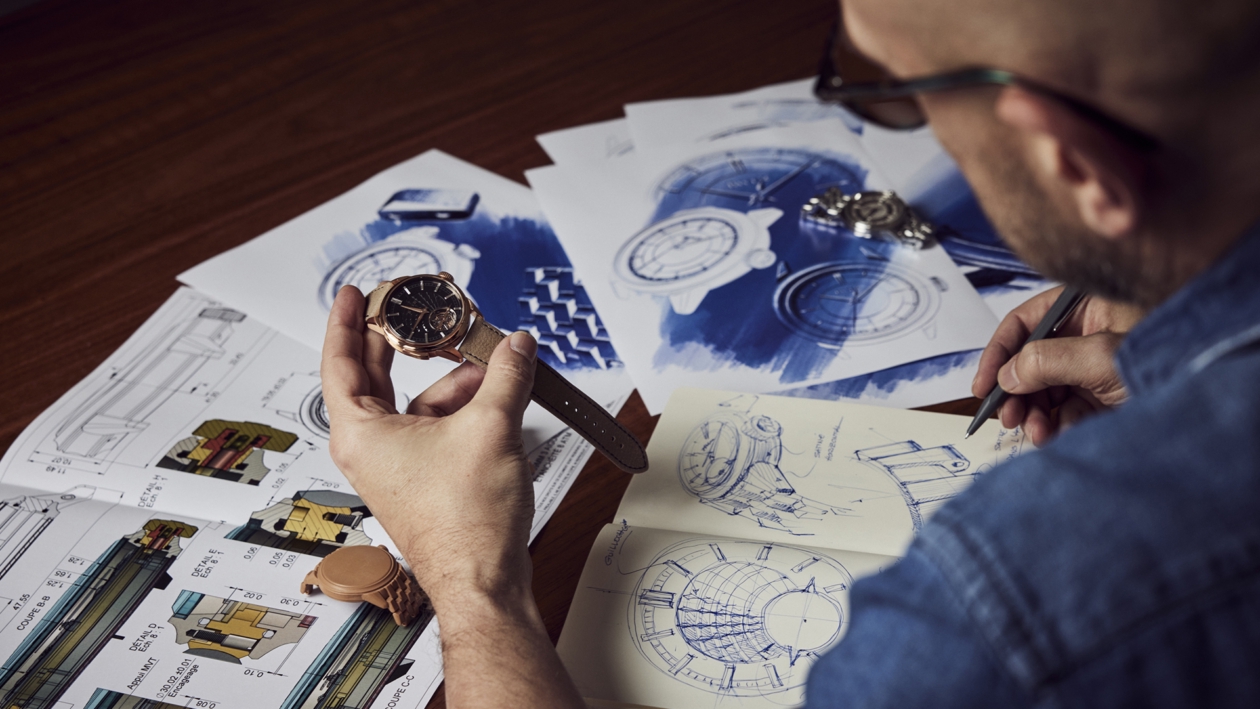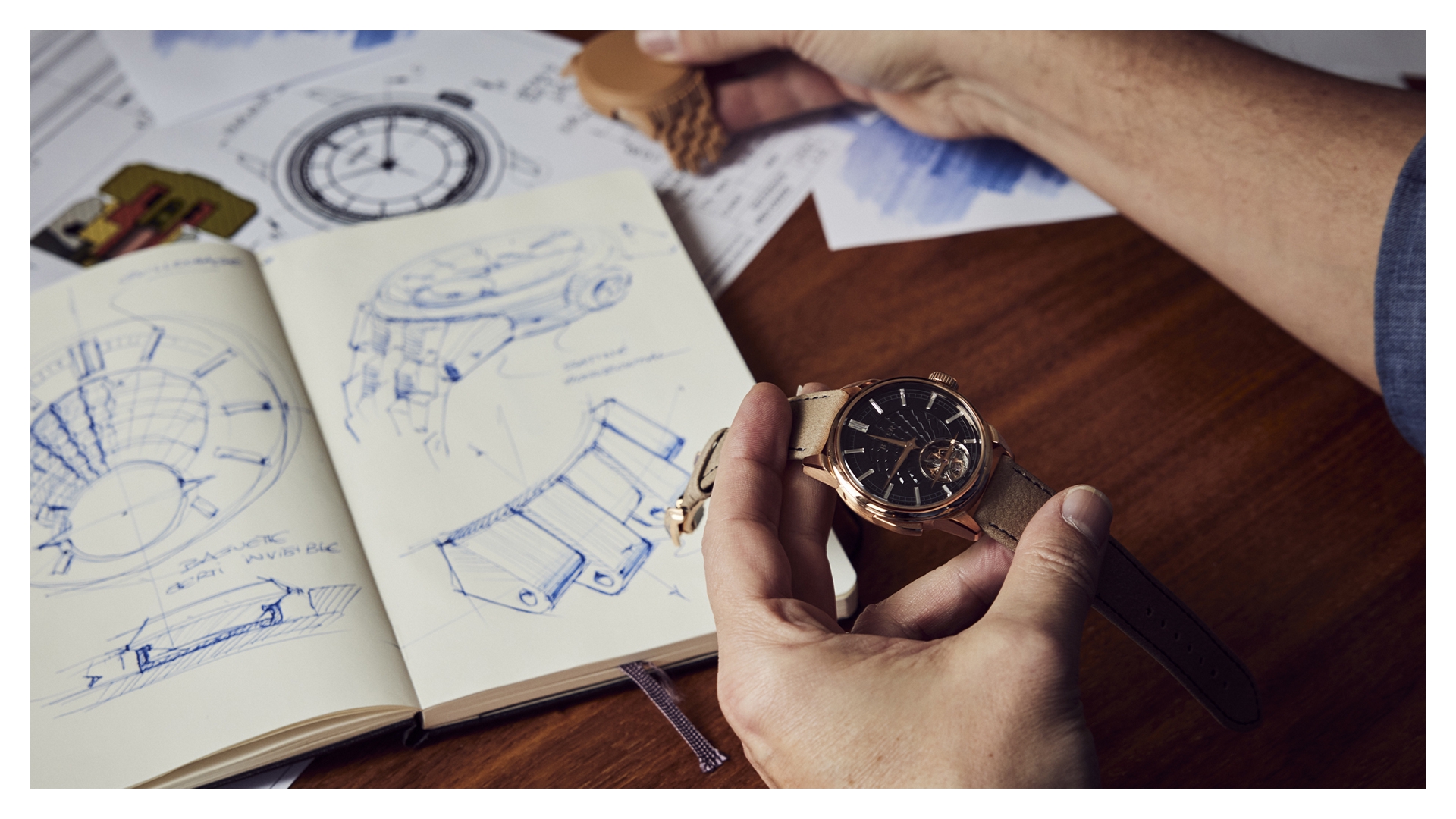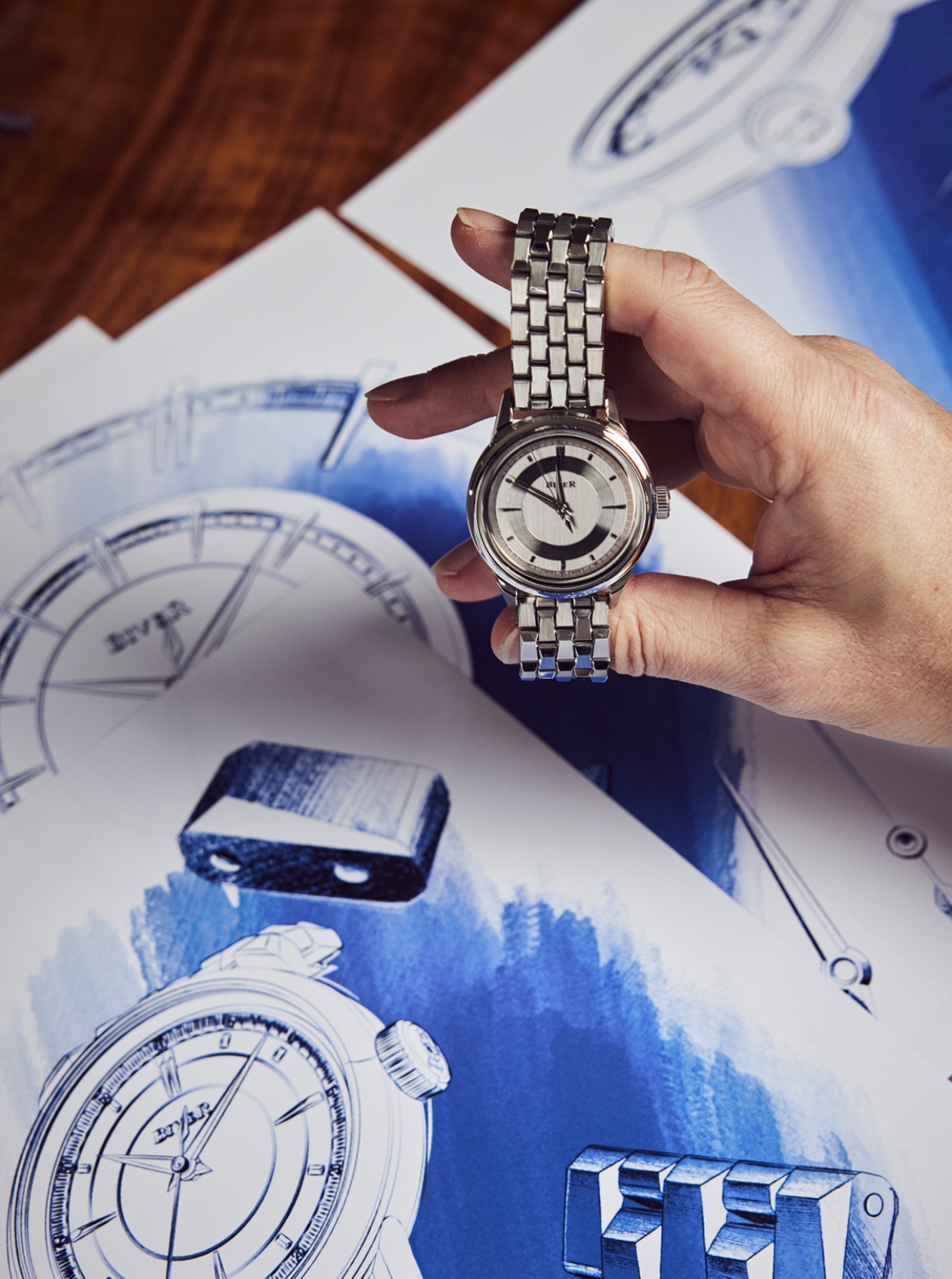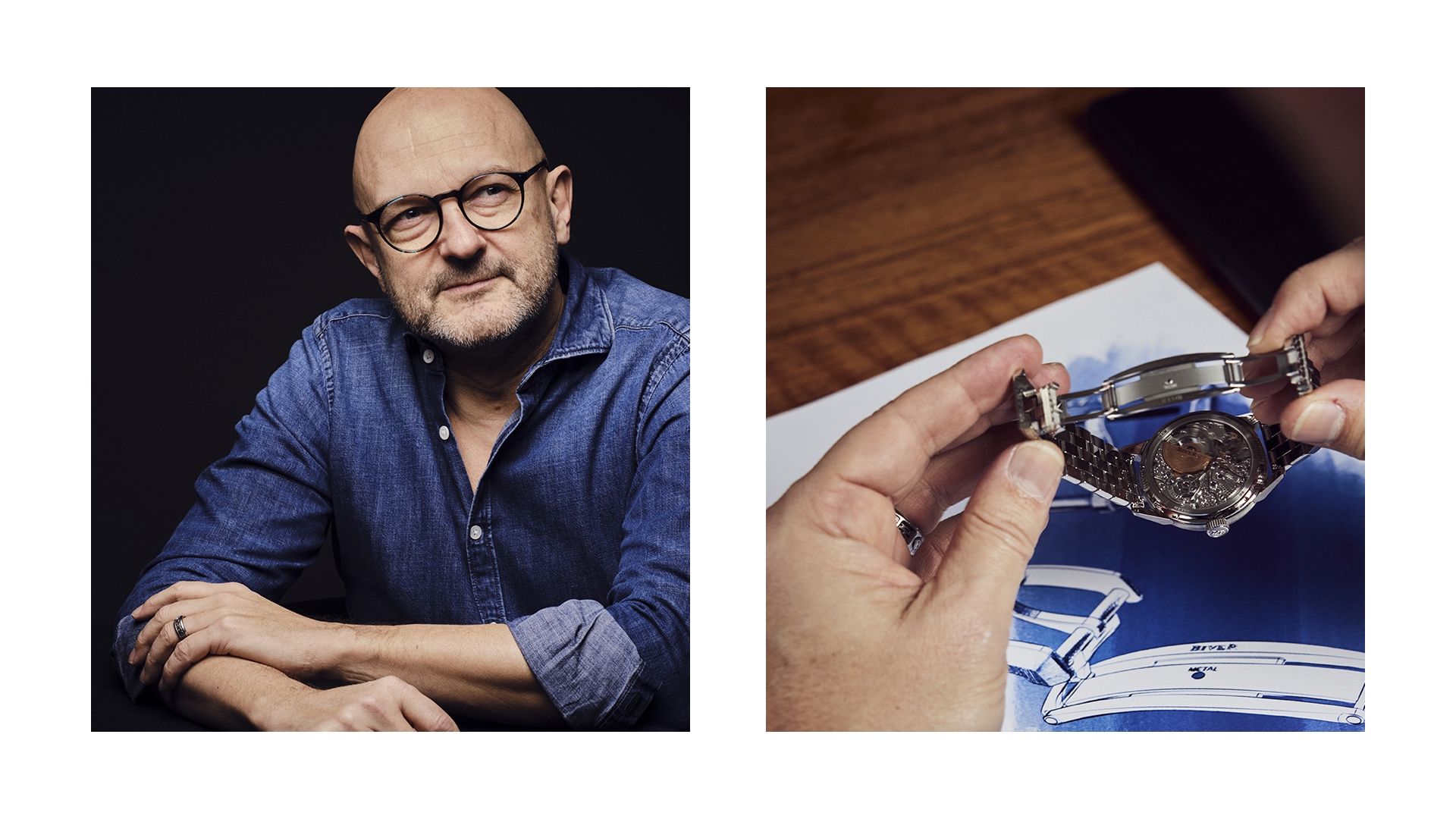WHEN WORKING ON AN OBJECT LIKE A WATCH, WHICH REQUIRES A UNIQUE COMBINATION OF ENGINEERS AND CRAFTSPEOPLE, HOW DO YOU THINK ABOUT YOUR ROLE AS A DESIGNER?
No matter what you are creating, the overall design process is always the same. The designer has to be the center of the process. I don’t mean that in an egotistical way, but the designer needs to understand the parameters from all the different departments involved, from production to marketing and everything in between, including cost and what can actually be produced. One exciting thing is that these parameters evolve so quickly, always offering new technological possibilities. There are things we can do today that were unthinkable just a couple of years ago.
DO YOU THINK THIS IS TRUE WITH THE HANDMADE ELEMENTS OF A WATCH IN ADDITION TO THOS MADE BY MACHINES OR WITH CUTTING-EDGE TECHNOLOGY?
Absolutely. In fact, working with handmade things, this is even more the case – there is a level of perfection you can have with a talented craftsman that you can never have with a machine. Years ago, I was speaking with someone at a company that makes CNC machines and measuring devices, and they mentioned that the finest sensor is actually the human touch. The tip of a human finger can detect things that even the most advanced machines cannot. It’s truly amazing.
WHEN WORKING WITH A NEW BRAND LIKE BIVER, HOW DO YOU CREATE A COHESIVE DESIGN IDENTITY, ESPECIALLY AT A TIME LIKE RIGHT NOW WHEN THERE ARE ONLY TWO PRODUCT FAMILIES AT VERY DIFFERENT LEVELS OF COMPLEXITY?
It’s true that in terms of complexity, the Carillon Tourbillon and Automatique are not shooting in the same range, but the spirit behind them and the aim for perfection is always the same. This is true whether we’re working with a super complex movement or a three-hand mechanism, because there is a shared complexity in the ways they are crafted and what they represent. This is what helps the brand stay coherent in terms of design. At least to me – and it seems for quite a lot of people – the family look is fairly obvious.
Whether we are talking about Biver or another brand, it is highly important for me to understand a brand’s DNA from the past and why it should exist today. Once you understand that, you can evolve it while keeping everything coherent and interconnected, whether it’s the hands, the indexes, the language for the architecture, the lugs, the bracelet, and so on. You need to be very rigorous in terms of design to keep building the identity of a brand. It’s so easy to say, “oh, I have a new idea today and I want to do this, and tomorrow I have another, and the day after I have another. ” All three ideas can be great, but they won’t come together and help you to build a brand. You always need to be very strict on yourself to keep on the right path.




